Interested in learning how to create beautiful designs with double applique embroidery?
It is a fantastic way to add layers, texture, and vibrant detail to your projects. By layering two pieces of fabric, you can create dynamic, multi-dimensional designs that stand out. In this guide, we’ll walk you through the simple steps to get started with double embroidery applique deisgns, helping you create stunning and unique designs with ease. Ready to enhance your embroidery skills?
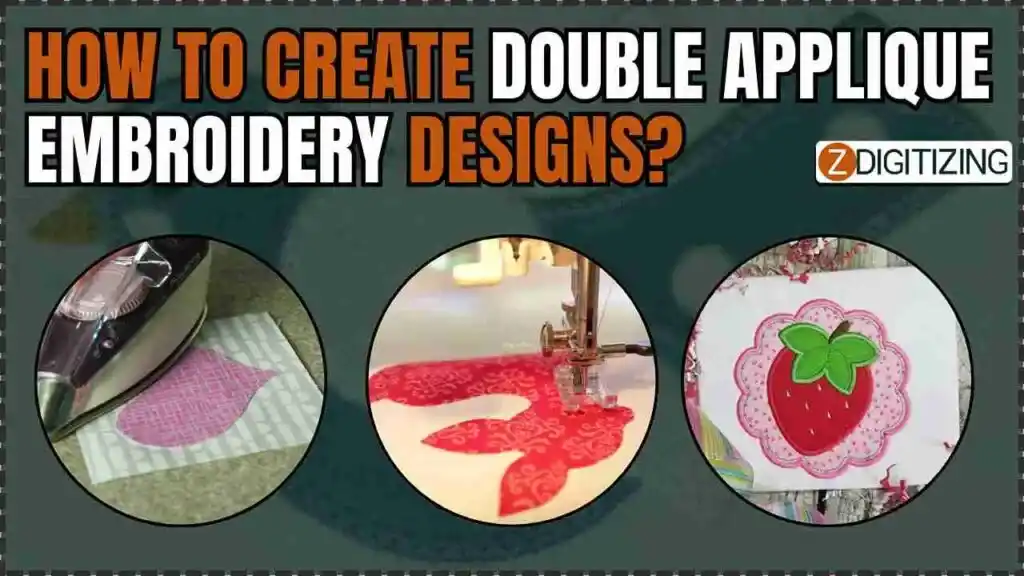
How to Create Double Applique Embroidery Designs
What is Double Applique Embroidery?
Double applique machine embroidery is a creative sewing technique where you layer two pieces of fabric on top of a base fabric to create a decorative design. This method allows you to use different colors and textures to make your embroidery stand out.
You cut shapes out of the two fabrics, arrange them on the base fabric, and then use stitching to hold everything in place and add beautiful details. It’s like making a fabric collage that is both pretty and textured, giving your projects a unique and eye-catching look.
Embroidery Digitizing & Vector Art Services
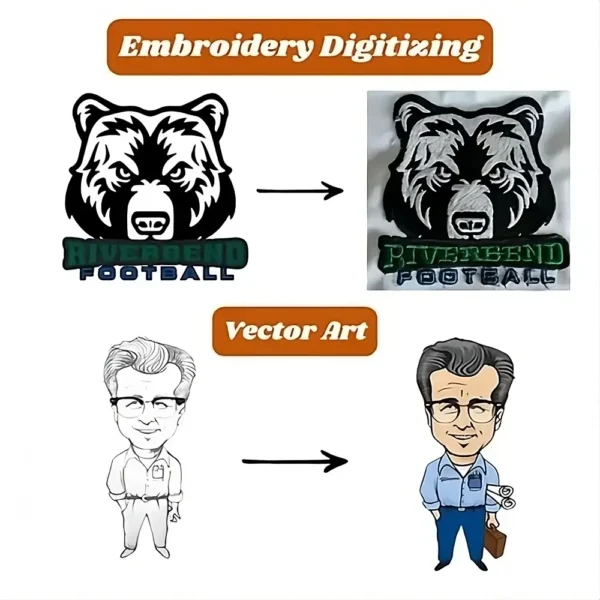
Looking for embroidery digitizing and vector art services that are affordable and reliable? We offer fast turnaround time, guaranteed quality, and the option to preview your design before payment, we make sure you get exactly what you need. Your satisfaction is our top priority, and we’re dedicated to delivering the best results. Don’t wait—try ZDigitizing today and see the difference in quality and service!
Embroidery Digitizing & Vector Art Services
Looking for embroidery digitizing and vector art services that are affordable and reliable? We offer fast turnaround time, guaranteed quality, and the option to preview your design before payment, we make sure you get exactly what you need. Your satisfaction is our top priority, and we’re dedicated to delivering the best results. Don’t wait—try ZDigitizing today and see the difference in quality and service!
Materials and Tools Needed for Double Applique Embroidery
To get started with applique embroidery, you’ll need some specific materials and tools. Below, we’ve listed everything required to ensure your project turns out beautifully and without any hitches
- Base Fabric
- Appliqué Fabric
- Paper-backed Fusible Web
- Tear Away Stabilizer
- Embroidery Thread
- Scissors
- That Purple Thang
- Mini Iron
- Light Pad
- Marking Pens
- Pressing Board
Let’s take a closer look at each material and tool to understand their roles and why they are essential for creating stunning embroidery with applique designs.
Materials for Applique Double Embroidery
- Base Fabric: The foundational layer where all applique pieces are attached. Choose a stable fabric such as cotton or linen to support the weight of additional layers.
- Applique Fabric: Fabrics cut into various shapes for layering on the base fabric. Select contrasting colors or patterns, such as silk or satin, to enhance the design’s depth and visual interest.
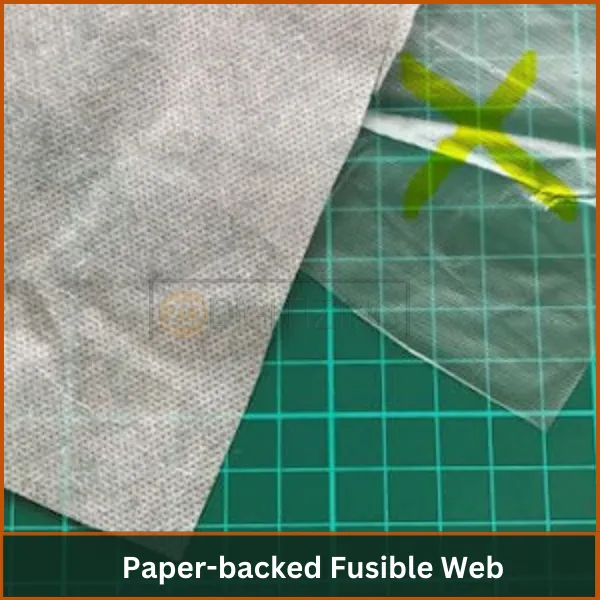
- Paper-backed Fusible Web: Acts as an adhesive to secure the applique pieces to the base fabric before sewing. A lightweight fusible web is recommended to maintain the fabric’s flexibility.
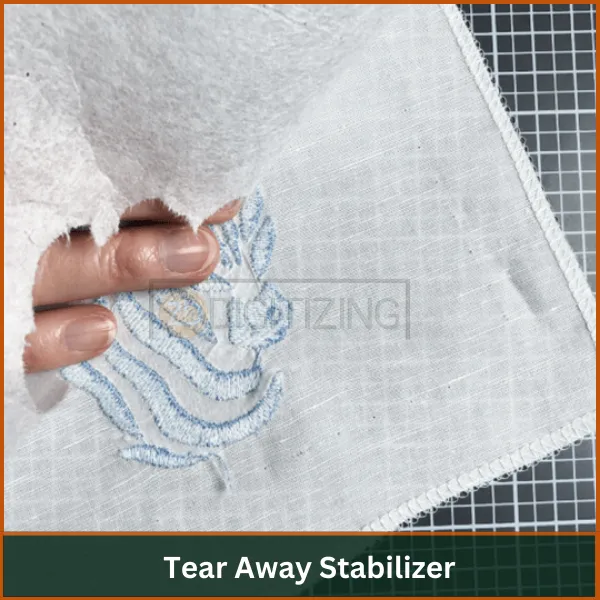
- Tear Away Stabilizer: Provides support during the stitching process and can be removed easily afterward. Use a high-quality stabilizer to ensure clean removal without disturbing the stitches.
- Embroidery Thread: Used to secure the applique pieces and add a decorative finish. Opt for durable and glossy threads like polyester or rayon.
Tools for Double Embroidery Applique
- Scissors: Essential for precisely cutting fabric shapes. Invest in high-quality scissors, such as Karen Kay Buckley’s, for accuracy and ease.
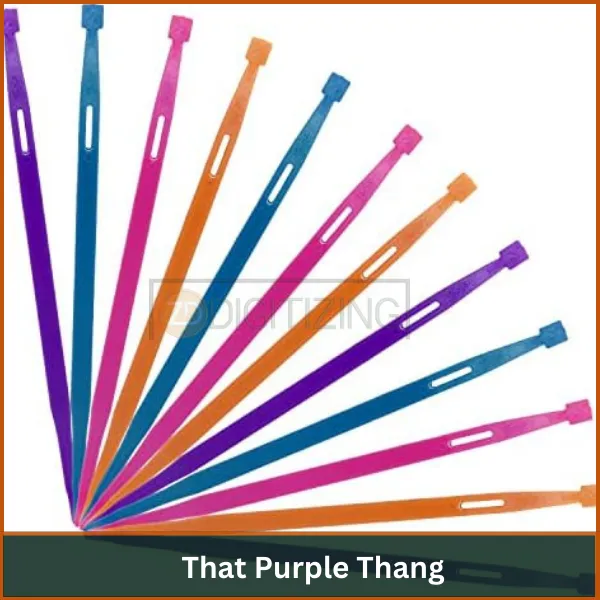
- That Purple Thang: Aids in fabric manipulation and precise placement of appliqué pieces. It is particularly helpful for handling intricate designs.
- Mini Iron: Useful for applying fusible web and pressing small areas of appliqué. Choose a mini iron with variable temperature settings to accommodate different fabric types.
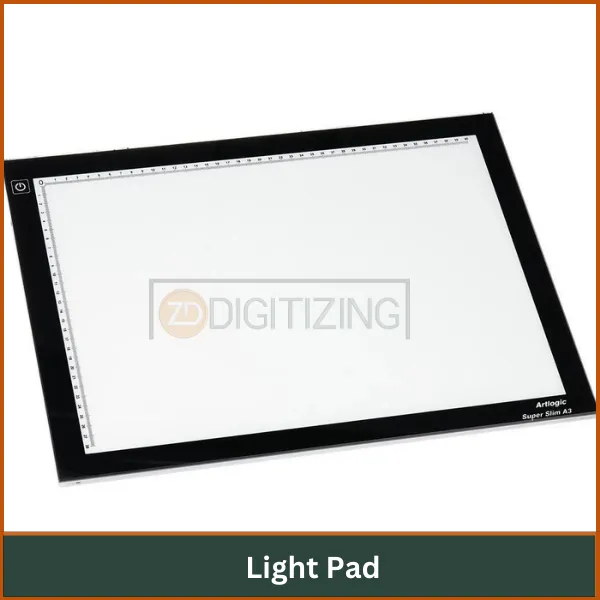
- Light Pad: Enhances visibility when tracing designs onto fabric, crucial for maintaining accuracy in complex patterns. Choose a light pad with adjustable brightness to work effectively with various fabric colors and thicknesses.
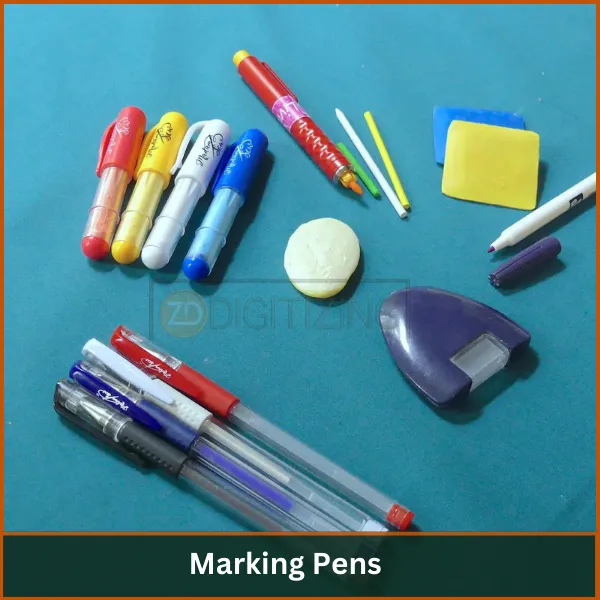
- Marking Pens: For tracing the embroidery design onto fabric. Water-soluble or air-erasable pens are recommended to ensure marks disappear after the embroidery is completed.
- Pressing Board: A portable pressing board is useful for focused pressing during the applique process, helping achieve a smooth and professional finish without distorting other areas.
Step-by-Step Guide to Creating Double Applique Embroidery
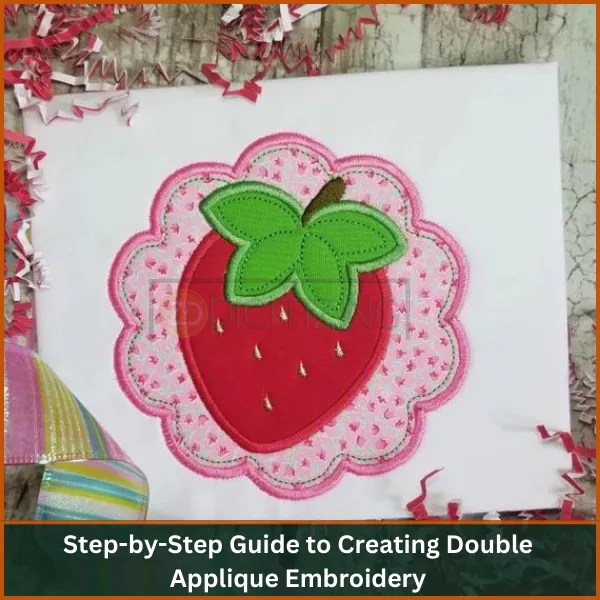
After gathering all the necessary materials for double embroidery applique, follow these step-by-step instructions to create your design:
Step 1: Prepare Your Design
First, pick or make your double applique embroidery design on embroidery software. Make sure to save it in a file format that your embroidery machine can read, like .PES. Ensure the design includes overlapping elements for the double applique effect.
Designing for double applique can be quite challenging—it not only requires good digitizing skills but also access to expensive software. If you find this step difficult or costly, consider our services at ZDigitizing.
We provide high-quality digitizing services at very affordable prices, so you can focus on your embroidery without the stress of upfront software costs. Plus, we offer fast turnaround times to help you get started on your projects right away and ensure excellent results.
Step 2: Hoop the Base Fabric
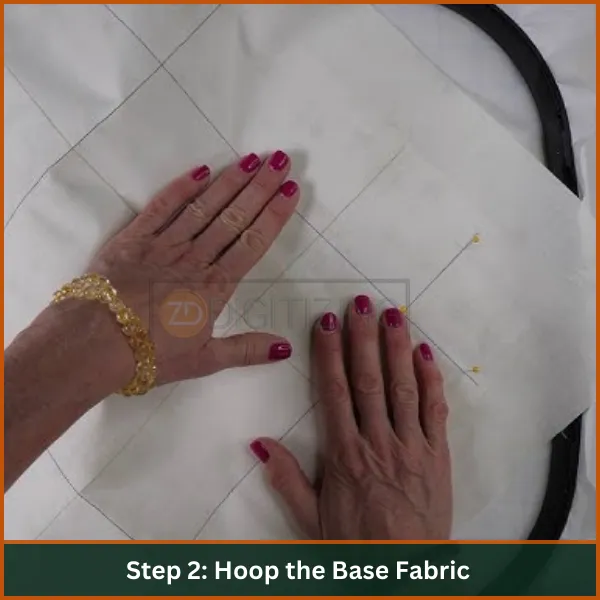
Put your base fabric into the embroidery hoop. Make sure it’s stretched tight and smooth to stop it from puckering while you stitch.
Step 3: Add Stabilizer
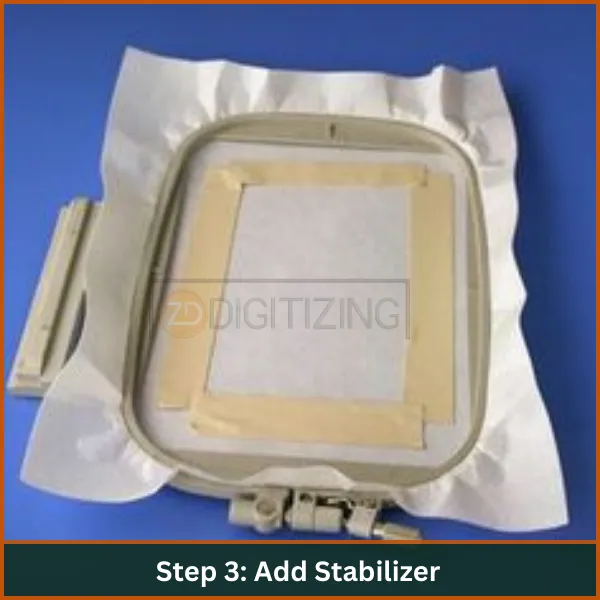
Under the fabric in your hoop, place a stabilizer such as tear-away or cut-away. This helps keep your fabric steady and supported while you sew.
Step 4: Stitch the Placement Stitch
Load the design into your embroidery machine and start with the placement stitch. This stitch shows you exactly where to put your applique pieces.
Step 5: Cut Applique Fabric
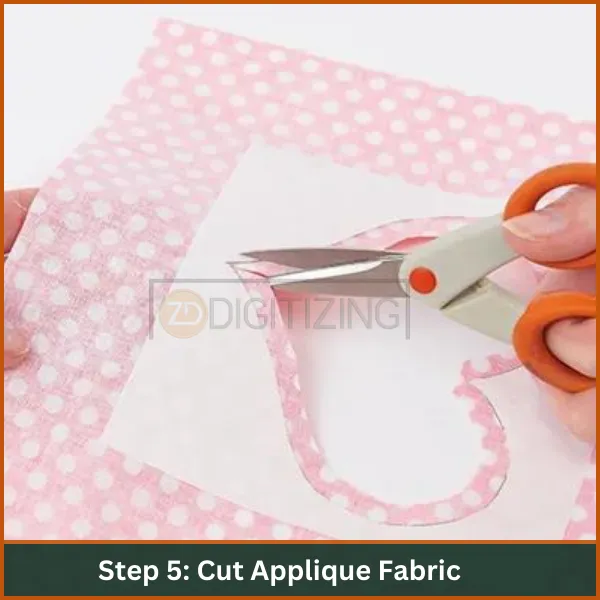
Take the hoop off the machine and use the placement stitch lines as a guide to cut out your applique fabric. Cut the pieces a little bigger than the stitch lines.
Step 6: Position Applique Fabric
Place your fabric pieces with the fusible web onto the stitched placement lines in the hoop. Make sure each piece covers its corresponding outline completely.
Step 7: Stitch Tack-Down Stitch
Put the hoop back in the machine and sew the tack-down stitch. This stitch holds the applique fabric in place on the base fabric.
Step 8: Stitch Tack-Down Stitch
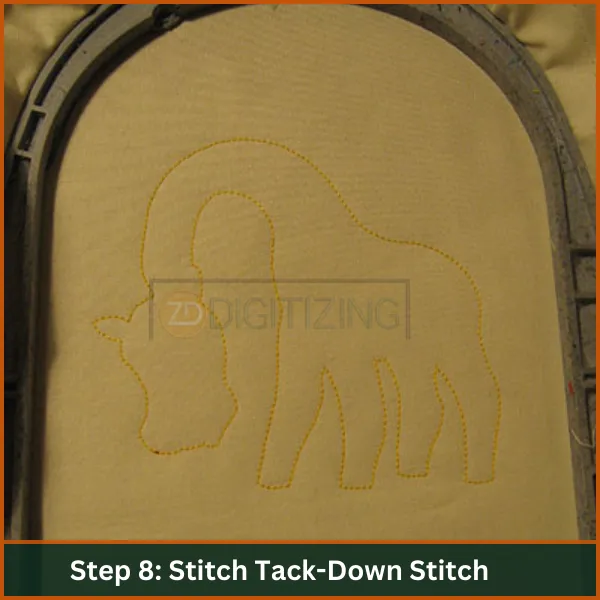
Put the hoop back in the machine and sew the tack-down stitch. This stitch holds the applique fabric in place on the base fabric.
Step 9: Trim Excess Fabric
Remove the hoop from the machine again. Use special applique scissors to trim off the extra fabric around the tack-down stitches carefully. Be sure not to cut the stitches.
Step 10: Add the Second Layer of Applique
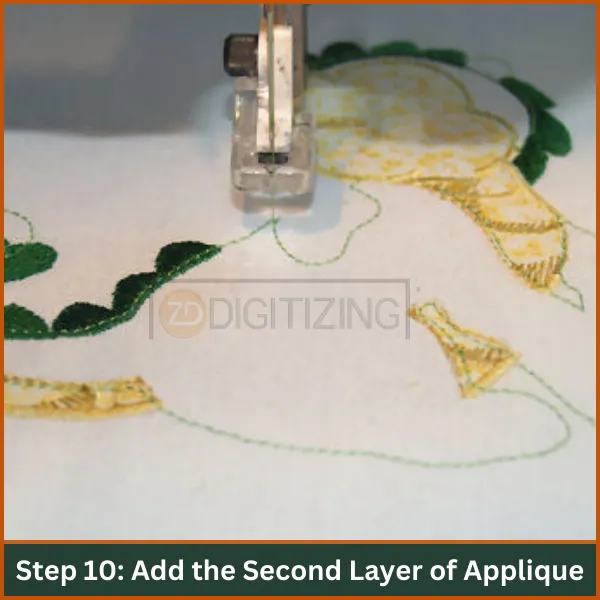
If your design calls for a second layer of applique, repeat steps 5 through 9 for the second set of smaller or detailed pieces, layering them over the first to create a dimensional effect.
Step 11: Finish with Zigzag or Satin Stitch
Return the hoop to the machine one last time and use a zigzag or satin stitch around the edges of each applique piece. This gives your design a neat and finished look.
Step 12: Clean Up
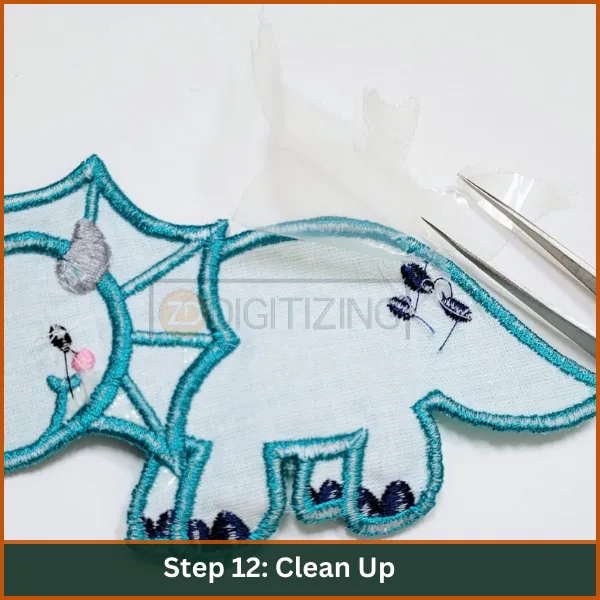
After all the stitching is done, take out any extra threads and remove the stabilizer that isn’t needed anymore. If you use a water-soluble topper, you can wash it off with water.
Step 13: Final Inspection
Look over your finished design for any loose threads or small mistakes, and fix them as needed.
Common Challenges and Solutions in Double Applique Embroidery
- Fabric Bunching or Puckering: Occurs if the fabric isn’t secured properly. Ensure fabric is smoothly adhered to the stabilizer and use a suitable fusible backing like Heat N Bond Lite.
- Inadequate Tack-Down Stitch: This may result in applique fabric shifting if not stitched correctly. Monitor the tack-down stitch closely and ensure it secures the fabric without causing bubbles or folds.
- Raw Edges Exposure: This happens if the satin stitch doesn’t cover the edges of the appliqué fabric fully. Use sharp applique scissors for precise cutting and adjust your satin stitch width as needed.
- Misalignment of Applique Pieces: This can occur when placing complex or curved pieces. Double-check placements using the placement stitches as guides and adjust before proceeding with tack-down stitches.
- Thread Breakage: This can interrupt stitching and affect design completion. Check and adjust your machine’s tension settings regularly and use high-quality embroidery threads to minimize breakage.
Embroidery Digitizing & Vector Art Services

Looking for embroidery digitizing and vector art services that are affordable and reliable? We offer fast turnaround time, guaranteed quality, and the option to preview your design before payment, we make sure you get exactly what you need. Your satisfaction is our top priority, and we’re dedicated to delivering the best results. Don’t wait—try ZDigitizing today and see the difference in quality and service!
Embroidery Digitizing & Vector Art Services
Looking for embroidery digitizing and vector art services that are affordable and reliable? We offer fast turnaround time, guaranteed quality, and the option to preview your design before payment, we make sure you get exactly what you need. Your satisfaction is our top priority, and we’re dedicated to delivering the best results. Don’t wait—try ZDigitizing today and see the difference in quality and service!
Final Thoughts:
In conclusion, double applique embroidery is a creative and exciting way to add layers, texture, and dimension to your designs. With practice, you’ll master this technique and be able to create beautiful, eye-catching embroidery projects that stand out from the rest.
If you need help digitizing your double applique designs, ZDigitizing is here for you! We specialize in high-quality embroidery digitizing, including complex double applique designs.
And to make things even better, we’re offering 50% off your first order! Getting started is easy—just chat with us, and we’ll give you a free quote in just 5 minutes. Let us handle the digitizing so you can focus on creating stunning embroidery.
Found this article helpful? Share it with your friends and let them know about our double applique digitizing services and discounts.
Thanks for reading, and we look forward to helping you with your next double applique project!
FAQs
To make applique designs, cut the applique fabric into shape, place it on the base fabric, and secure it with adhesive or stitches. Then, use an embroidery machine or hand stitching to attach it with a satin or zigzag stitch.
For reverse applique, layer the base fabric over the applique material, stitch the design through both layers, then cut away the top layer inside the design to reveal the fabric underneath.
Choose a simple design, trace it on the back of your applique fabric, cut it out, place it on the base fabric, and secure it with stitching using a straight, zigzag, or blanket stitch.
The best method varies by project. Machine applique with a satin or zigzag stitch is durable, while hand applique provides more control for intricate designs or delicate fabrics.












